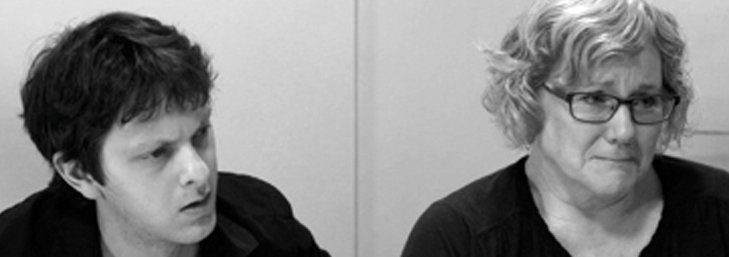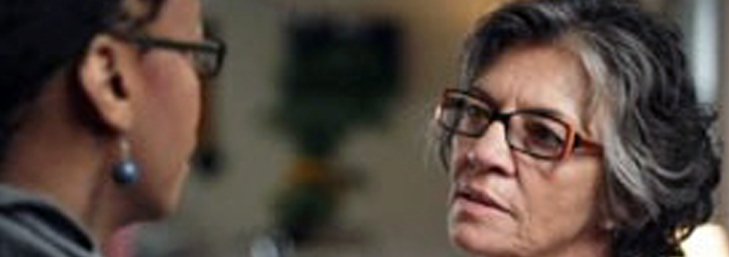

Decisions about care at the end of life may be complicated by differences between patients and their families, including differences in how their faith guides important decisions.
Physicians caught between these conflicting values might benefit from working with the spiritual care team to reach a resolution. In the case of Mr. Al-Sabah, you will explore ways to handle such conflicts.

Ibrahim Al-Sabah, 62, has been treated for chronic obstructive pulmonary disease (COPD) for many years. His health has been slowly declining, and he is oxygen dependent.
During an admission to the hospital last month, he was intubated and on a ventilator for six days. Last week, he was readmitted for an exacerbation of his COPD. Despite aggressive medical treatment, his respiratory status continues to decline.
He is currently on 100% O2 by mask, and his blood gases remain marginal. His physician, Dr. Alan, thinks Mr. Al Sabah has less than a month to live. When he was admitted this time, Mr. Al-Sabah told Dr. Alan that he does not want to be on a ventilator again and prefers to be allowed to die naturally, with measure to keep him comfortable.
Mr. Al-Sabah and his wife immigrated to the United States from Kuwait 30 years ago. They have an adult son and daughter, who were born in the United States. Mrs. Al-Sabah and either their daughter or son have been with the patient at the hospital most of the time. Several other relatives and friends have also visited. The family is Suni Muslim, and Mr. Al-Sabah typically prays five times a day, preceded by ablutions (ritual washings with water). At his wife's request, the nurse has shifted his bed east, toward Mecca, so he can pray from bed.

Based on Mr. Al-Sabah's condition and his expressed wishes, Dr. Alan recommends that Mr. Al-Sabah transition to hospice care. Mr. Al-Sabah's son, Ahmad, is present when Dr. Alan raises the subject of hospice.
Watch how Mr. Al-Sabah and Ahmad respond.


Mr. Al-Sabah agrees to hospice care, but his son is reluctant. If the patient chooses hospice, he will need the support of close family members--his wife and children--who will help provide his care.

Watch as Dr. Alan offers a referral to spiritual care. Notice that he acknowledges the differing views of the father and son and explains how the spiritual care program works at this hospital.
Dr. Alan meets briefly with the hospital's chaplain and explains the family's background and the course of Mr. Al-Sabah's disease. He describes the patient's preference for hospice and the discussion with the patient and son. The chaplain agrees to call upon an imam who is available to visit patients in the hospital.
Listen to a few moments of their discussion and the insights the chaplain offers.

The chaplain arranges a meeting between the imam and the Al-Sabah family. They discuss their beliefs, their understanding of Islam's teachings about dying, and how they each came to these understandings.
Afterward, the imam lets the chaplain know the family is ready to reopen the discussion of hospice with Dr. Alan. The chaplain summarizes the visit in the chart, as Dr. Alan requested.
Listen to Dr. Alan's conversation with Mr. Al-Sabah and Ahmad after their visit with the imam.

We should keep him comfortable and think about how we can spend the rest of our time together as a family.
Mr. Al-Sabah agrees to meet with a hospice social worker along with his wife and their son and daughter. They discuss the care he will need and the support hospice will provide for him and his family. The family decides to enter hospice, which Mr. Al-Sabah will receive at home.
Before Mr. Al-Sabah is discharged, the imam visits again. He talks with the family about the rituals that will be important to them now and explains how they can create a meaningful transition between life and death.
Over the next few weeks, Mr. Al-Sabah's condition deteriorates. With hospice care, he can remain comfortable, though he gradually becomes less responsive. Nonetheless, Mr. Al-Sabah and his family, particularly his son, are able to continue talking about their faith and further strengthen their relationships.
A month after his discharge from the hospital, Mr. Al-Sabah dies.

Spiritual care programs can support physician's efforts to recognize and plan for the spiritual needs of their patients.
Bridging faiths:
Some families, like the Al-Sabahs, may be comfortable discussing spiritual matters with a chaplain from a different faith tradition than their own, and others may not.
Additional options include inviting the family to involve a spiritual leader they know from the community and offering to enlist the chaplain's help to find a local resource who shares the family's faith.
In such cases, the chaplain can offer to be involved with the family in creating a bridge between them, their spiritual leader, and the facility staff.

I will arrange for them to talk with the imam. After that, we may be able to better understand what they want.
There are also several mnemonic devices to guide you through a spiritual assess and facilitate the inclusion of spiritual care for patients who desire it.
Pulchalski, 2002

In Mr. Al-Sabah's case, you observed that spiritual values can guide decisions about end-of-life care and that family members may hold differing values within the same faith.

Pulchalski, C. M. Spirituality and end-of-life care: A time for listening and caring. Journal of Palliative Medicine 2002; 5: 289-294.
This work was supported in part by grants from the Cambia Health Foundation and the National Institute of Nursing Research (NINR) at the National Institutes of Health (NIH. The content is solely the responsibility of the authors and does not necessarily represent the official views of the Cambia Health Foundation or the National Institute of Nursing Research.

Understanding your patient’s story, including their illness and life beyond their illness, helps you provide them the best care possible. These modules, presented in three parts, will introduce you to the communication skills needed to elicit the patient and family narrative.

This module briefly reviews the Triple Aim for improving health care, presents a video case study in which the Triple Aim is not met, and analyzes types of interprofessional conflict and strategies for resolving them.
After completing this module you will be able to:

Setting goals and making a plan for achieving them fosters hope and allows individuals and families to feel they have some control in their lives. As healthy aging progresses or incurable illness advances, individuals will change and adapt their health care goals...

The number of individuals who speak English with limited proficiency (LEP) or who don't speak the language at all is growing in the United States as the population becomes more diverse. Language differenced can create barriers between practitioners and patients and affect the quality of patient care.
In the case of Mrs. Rodriguez, you will learn how professional interpreters facilitate important clinical communication, enhancing the patient-practitioner relationship and the quality of care....

Given how much there is to learn about facilitating family conferences, focusing attention on emotions may seem like a strange use of time. However, we’ve found that effectively addressing patient and family emotions helps avoid many of the common pitfalls in these encounters, including conflict...

Patients, families and members of the interprofessional palliative care team draw upon deeply held personal values and professional standards to set goals of care.
Differing values and standards for care may give rise to conflicts between...

Patients with chronic or life-limiting disease may supplement their treatment with complementary and alternative medicine (CAM). However, less than 40% of patients tell their provider about their CAM use. Even when the physician asks them directly, they may be reluctant to discuss their CAM use....